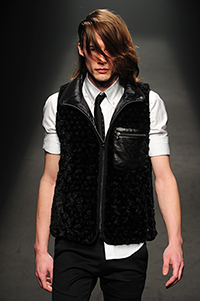 It might be hard for some to keep up with the dizzying pace of fashion in Tokyo – or at least the aggressive pace Tokyo boutiques change seasons. In fact, as soon as you settle on buying that summery Marc Jacobs T-shirt you’ve had your eye on for a while, the shelves will be swept clear of all trace of summer and replaced with autumnal hues and woolly wintry garb. Blink and the season has changed. Just look at all the shop staff mincing and sashaying around in Aoyama, Daikanyama, and Omotesando: all stunning, all attentive, and all very much decked out in the latest trends of Autumn/Winter 2010-11.
It might be hard for some to keep up with the dizzying pace of fashion in Tokyo – or at least the aggressive pace Tokyo boutiques change seasons. In fact, as soon as you settle on buying that summery Marc Jacobs T-shirt you’ve had your eye on for a while, the shelves will be swept clear of all trace of summer and replaced with autumnal hues and woolly wintry garb. Blink and the season has changed. Just look at all the shop staff mincing and sashaying around in Aoyama, Daikanyama, and Omotesando: all stunning, all attentive, and all very much decked out in the latest trends of Autumn/Winter 2010-11.
However, thanks to Japan’s biannual fashion fiesta that is Japan Fashion Week, we can now manage to stay one season ahead of the game. Japan Fashion Week and the Tokyo Collections therein have blossomed since their embryonic beginnings a decade ago. Those who were around back then may recall the days when a handful of nobodies presented their interpretations of fashion in disparate locations dotted around Tokyo. Early audiences consisted largely of fashion school students (with both buyers and the international press being conspicuously absent). Now, the entire production has morphed into a fully-fledged, well-oiled, high-octane, reputable, global fashion magnet – attracting both buyers with deep pockets, and the very best in established and emerging talent.
EYES WIDE SHUT
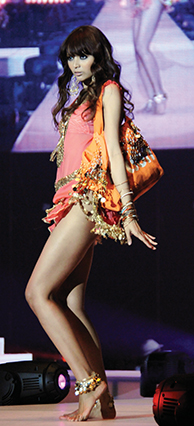 One shining star who is quickly establishing herself as far more than just an emerging talent in Japan’s world of fashion design is 24-year- old Aguri Sagimori. The youngster is soon to be one of Japan’s iconic fashion exports, following in the footsteps of Kawakubo and Yamamoto. She is simply that good. The Vantan Design Institute graduate first debuted at Japan Fashion Week (JFW) in March 2008 and in August 2009 she presented her Autumn/Winter collection at TIS (Taipei In Style). Two months later, she participated in the Vantan Tokyo group exhibition in Paris, where she showcased her fourth collection.
One shining star who is quickly establishing herself as far more than just an emerging talent in Japan’s world of fashion design is 24-year- old Aguri Sagimori. The youngster is soon to be one of Japan’s iconic fashion exports, following in the footsteps of Kawakubo and Yamamoto. She is simply that good. The Vantan Design Institute graduate first debuted at Japan Fashion Week (JFW) in March 2008 and in August 2009 she presented her Autumn/Winter collection at TIS (Taipei In Style). Two months later, she participated in the Vantan Tokyo group exhibition in Paris, where she showcased her fourth collection.
Sagimori, who established her nascent empire Aguri Co. Ltd. in spring this year, has grown and matured as a designer in no time at all. In fact, such has been the pace of her stunning evolution that it won’t be long until she outgrows the homogeneous Japanese fashion scene and is commanding the attention of fashion meccas like Paris, London, Milan, and New York. A mere three years after graduating, Sagimori presented a collection that for many fashion insiders was the absolute epitome of all that is brilliant, modern, individual, creative, and perceptive about Japanese fashion design.
During her fifth season participating in JFW, in her Autumn/Winter Women’s 2010-11 collection, themed “shut my eyes to see,” she demonstrated her effortless understanding of the female form and seemingly innate ability to tailor lines that cast long, dark, slender silhouettes, whilst momentarily playing with splashes of color such as antique gold. Such is this designer’s acute understanding of structure, womanliness, and attitude that Sagimori, through her designs, finds herself unwittingly writing the very annals of Japanese fashion history.
Daring micro-mini skirts in sheer, silver silk with fearless zips audaciously lacerating the front of the fabric were worn with sharp, bespoke two-buttoned gray jackets with prominent upturned
boots. This look struck a perfect balance between fine tailoring and street couture – a look only Sagimori could pull off.
Snappy, inky trench coats and dresses of pure wool and original jacquard lace were prominent in this maven’s offerings, as were razor-cut jackets and coats of fine high-grade wool and lustrous gabardine, brought to life with leather frills and belt accents.
Vests and blouses of voluminous fox and Tibetan ram also added a dash of the exquisite to temper the urban chill. Elbow-length fur gloves and stoles were worn brazenly with black, sleeveless vests and when hemlines weren’t shockingly short and hugging figures, they cascaded from the waist to the knee for a slightly more conservative, yet utterly chic look.
Sagimori, clearly a fan of smoky monotones, added cheeky screen prints of butterflies to the right-hand side of an exquisite, ivory-white, silky skirt that flared out from the waist to mid-calf where it tapered to a stunning finish that was high at the sides and long in the front and back.
Sticking with the butterfly theme and in addition to a gray, heavy-knit cardigan that doubled up as a shawl, Sagimori’s showstopper was a full-length, sable tailored dress with high, overly defined collars. However, the uniqueness of the piece came from the fact the back was artfully cut away and delicately engineered into the open section was a breathtaking handcrafted butterfly adornment that came to life as the model sashayed down the runway – the soft breeze causing a hundred tiny wings to flutter coquettishly.
WISDOM OF THE DREAM
One fashion maverick who continues to not just turn heads during his eclectic shows but actually make 1960s mod lines both contemporary and accessible is Kazuhiro Takakura, whose @Izreel brand goes from strength to strength with each season that passes. His 2010-11 Men’s Autumn/Winter collection is absolutely no exception.
The unmistakable blond-
mopped Takakura says that his collection, entitled “Synchronicity,” is an ode to the Jungian principle of acausal connection of two or more psycho-physic phenomena and doubles up as a dedication to the late Japanese hip-hop producer, Nujabes, who was a close friend of the Izreel designer.
Perhaps it’s a rebellion against his studious days as a mathematics major, or maybe it’s just that he’s got a keen eye for all that is ‘male urban chic,’ but Takakura’s layered approach to men’s fashion, which sees leopard print stockings worn with Chelsea boots under knee-length, khaki cargo shorts – on paper at least – is far from logical. Then again, not all of Jung’s ideas hit straight away. In the flesh however, Takakura’s extraordinary dreamlike wisdom makes perfect sense.
The stockings, an @Izreel signature piece this season, were worn with sneakers and cargo pants in cloudy grays and blacks and with flying jackets with heavy fur-lined collars. Simple, skinny-legged jeans in shadowy charcoal were worn low and off the hips with dusky, sprawling knitted cardigans drawn to order by bulky belts emblazoned with audacious gold embellishments. In fact, the cardigans were reminiscent of the upper-half of a traditional Japanese jimbei or shiromusashi jacket, or even a gi worn in karate and judo dojos but padded out for winter and given Takakura’s quintessentially contemporary, street-level twist.
LAYER CAKE
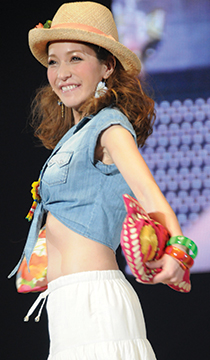 Protégé of much fêted Rei Kawakubo and schooled by Kawakubo’s understudy, the eminent Junya Watanabe, Nozomi Ishiguro launched his career with Comme des Garçons and spent 12 years as lead designer on three separate lines for the label.
Protégé of much fêted Rei Kawakubo and schooled by Kawakubo’s understudy, the eminent Junya Watanabe, Nozomi Ishiguro launched his career with Comme des Garçons and spent 12 years as lead designer on three separate lines for the label.
Fast-forward a few years and atelier-owning Ishiguro is producing his own designs for his own crowd. He’s operating below the JFW radar, and well he should. His creations, for the mainstream, would bend minds.
Although known for both men’s and women’s pieces, Ishiguro’s creations on display this time around were strictly for the girls. Or not. Rough, loose-fitting chiffon skirts cascaded well below the ankles and were doubled with voluminous, fudge-brown knitted cardigans with red trim and stunning gold detailing, comprising a look that fused Japanese and European sentiments with sub-Himalayan influences.
A baby-doll, A-line blouse-cum-micro-mini skirt in dirty cream was stamped with a multitude of uniform animal prints so intricate they looked as if they’d been sketched on with a 2B pencil. These were worn with matching shredded stockings wrapped snugly in shin-length, gray woolly socks and “footwear” that can best be described as the hybrid love-child of a pair of Roman gladiator boots and a pair of Chuck Taylor Converse high-tops. Genius.
Lips were defined in delicate pink, bordering on cutesy, but with just enough edge. Eyes were shadowed in the deepest purples and lashes looked like dark black centipedes. Hair was big. Ishiguro brought back the bouffant and Amy Winehouse would’ve been proud, although I’m not sure she’d wear his shoes.
Variations of Ishiguro’s hallmark layers were seen in flashes of vermillion and sunset orange, and stockings graduated from animal prints to pretty pink hearts for a dash of femininity.
A real head turner was a massively oversized, fluffy snow-white coat, held snug by a single gargantuan safety pin. The piece was delightful. Only Ishiguro could get away with it. The model looked like she was wearing a giant, deliciously warm-looking marshmallow. Bear in mind this is the same designer well renowned for sending a model down the runway with 150 meters of straps somewhat inexplicably attached to a pair of cargo pants. Innovative? Possibly… though not ideal for escalators, or walking in general, one might proffer.
From the sublime to the brilliantly ridiculous, Ishiguro inspires the imagination with pieces that are street-chic, yet avant-garde to the point aficionados may not know whether to don the attire or have it framed.Tokyo Girls Collection is a fashion event synonymous with all things girly, glitzy and glamorous. Millions around Japan are now strutting their stuff having picked up ideas of what spring and summer 2010 will bring, courtesy of the March 6th extravaganza down in Yokohama’s renowned Arena.
In what was a full on, all day blitz aimed at capturing – and molding – the hearts and minds of the nation’s female youth, the organizers succeeded big time. A massive 25k-plus audience crammed into the stadium having waited patiently outside for hours in the drizzle of late winter on the Kanto plain. As they wound their way in past ticket checkers, program dispensers and the first of many promotional stands found scattered around the two floors of the main stadium area, the girls were, for the most part, starry eyed and expectant. All – no exceptions – were seen repeatedly glancing at watches, clocks on their keitais and up at the main of three huge screens to see just how long they had to wait until it was 3pm – the hour TGC finally came back to Yokohama.
The 25,000 or so attending would not go home disappointed. Huge names in the Japanese fashion magazine / modeling industries came together under a wide range of brand names to offer a seven hour glimpse into just what to don should you be heading to Harajuku, Shibuya or the beach when the mercury goes north this summer. Many of these fashions have already started to appear on the streets of the capital, with flowery dungaree-style outfits, short dresses (that are actually more of a pant-suit-with-legs-cut-off get-up), and straw hats that would not look out of place on English beaches of the 1910s. The bikinis modeled will start appearing around the time you are holding the latest J Select in your hands, as will many of the shorter – some almost micro-minis – seen and snapped.
In as far as those charged with making the show a hit with the fans, household names such as Yu Yamada, Marie, Saki Sugawara and JULIANA all took to the catwalk numerous times in a range of outfits for various brands. And, continuing a trend from previous versions of the show, the organizers turned to a range of Japan’s so-called ‘talents’ to add a little more flavor to the mix. Particularly popular in March were TV personalities Becky and Aki Hoshino, known more for her bikini than her fashion modeling work. Out there with the proverbial fairies, meanwhile, was the guy dressed as a gal: Jonte*Moaning. In his high heels, body-hugging dress and more make-up than most of the actual models, this was one cookie looking to cut a name for himself on the Japanese alternative entertainment scene in the coming months and years – keep an eye out on the variety shows and you may see him popping up from time to time.
In all, scores of models put in an appearance as the show moved towards its rip-roaring climax, and not a minute would go by in all the hours it ran without at least some form of fashion-based stage
Story by Mark Buckton
From J SELECT Magazine, Jluy 2010

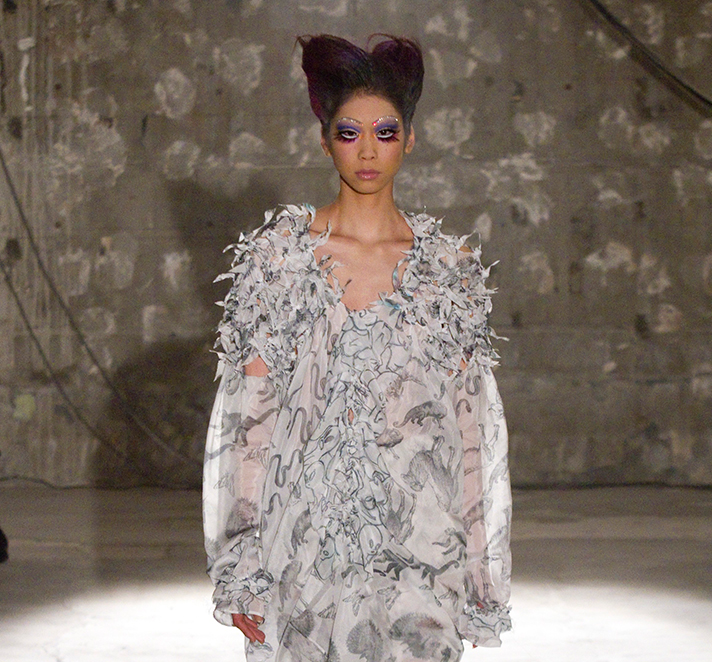




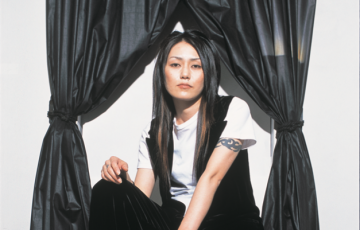
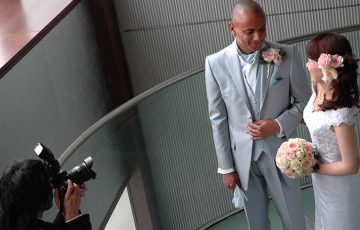
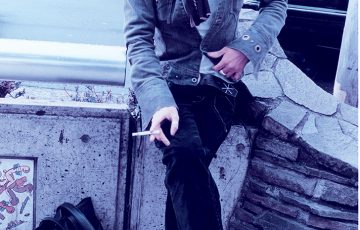
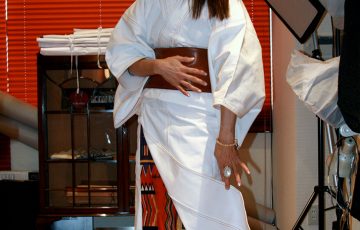
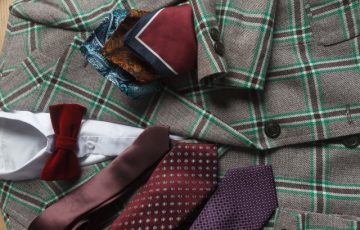


Recent Comments